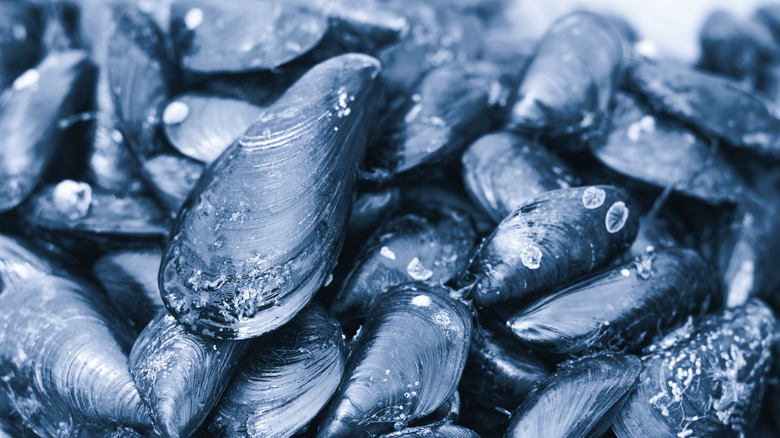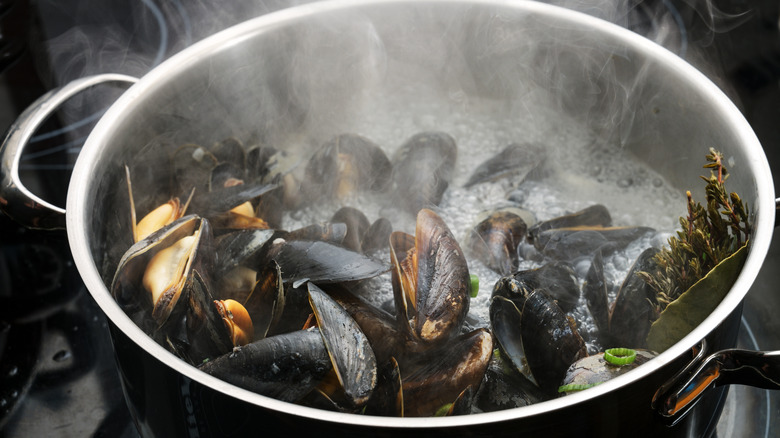The Most Common Type Of Mussel In The World
There may be nothing quite as delicious as a perfectly prepared mussel. Shellfish lovers the world over rejoice in these simple little bivalves that burst with briny sea flavor. The French, in particular, are great fans, crafting such classic recipes as moules marinière, mussels steamed in a sauce of white wine, and shallots, per French Guy Cooking. You can prepare them in a simple creamy garlic sauce or get a little "angry" like Jamie Oliver and mix them with chilis and a spicy tomato arrabbiata sauce over linguine. The point is, mussels are delicious, and if you can get access to top quality rope farmed mussels, as Bon Appétit recommends, you're in for a real treat.
Like their oyster cousins, mussels are filter-feeding bivalves that eat microscopic plankton and algae from the water. There are numerous varieties of mussels that can be found all across the world, but only 17 of them are edible, according to Pangea Shellfish Co. Some popular species are the Mediterranean mussel and the New Zealand green-lipped mussel. Though you can find different varieties worldwide, one type of mussel is the most widely consumed on the globe. You can find it in two of the world's oceans, and they have a year-round availability, per Better Homes and Gardens. We're speaking, of course, of the blue mussel.
Beautiful, tasty, and blue
According to NOAA Fisheries, the blue mussel (Mytilus edulis) are the world's most commonly harvested edible mussel. In the U.S., blue mussels grow in abundance off all major coasts from New England and the Mid-Atlantic to Alaska. Not the largest mollusk you'll ever come across, blue mussels typically reach maturity when they measure between 2-4 inches in length, but they've been known to grow as large as 8 inches. As the name suggests, their shells are a blue-black or brown color. The high reproductive and fast growth rates of these mussels are undoubtedly a big reason the U.S. harvests them in such great numbers.
One state that is particularly associated with blue mussels is Maine. Though lobsters are the more iconic shellfish, Maine has enjoyed great success harvesting blue mussels, which live along the coast from Casco Bay to Jonesport (via Maine Department of Marine Resources). Maine's biggest competitor for blue mussels are those caught off the coast of Prince Edward Island in the Canadian Maritimes. Pangea Shellfish Co. reached out to several professional American chefs to see which mussel they preferred, and they overwhelmingly chose Maine blue mussels for their larger size, better meat, and the fact that they are sourced in the country. If you have mussels, chances are good that you're eating a blue mussel, and if you live on the East Coast, you're probably chowing down on some from the Pine Tree State.

